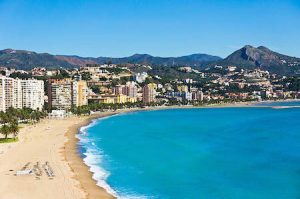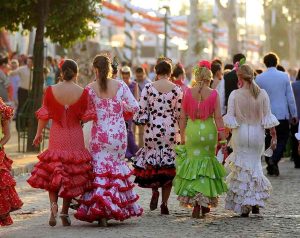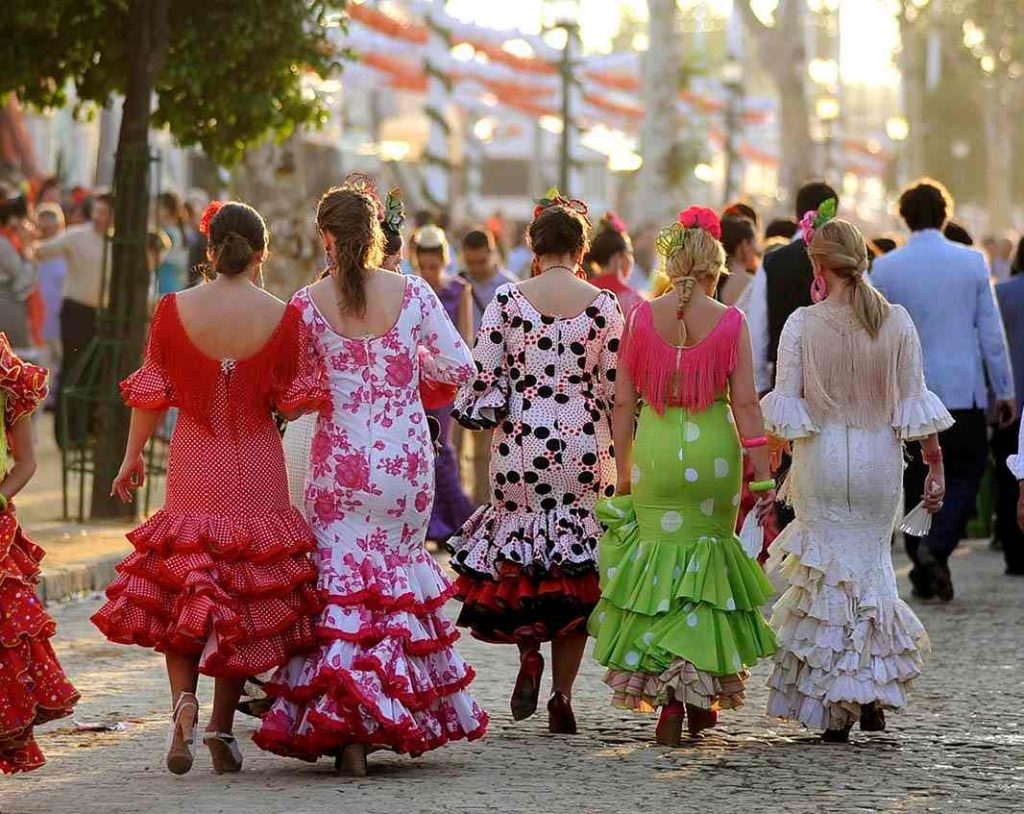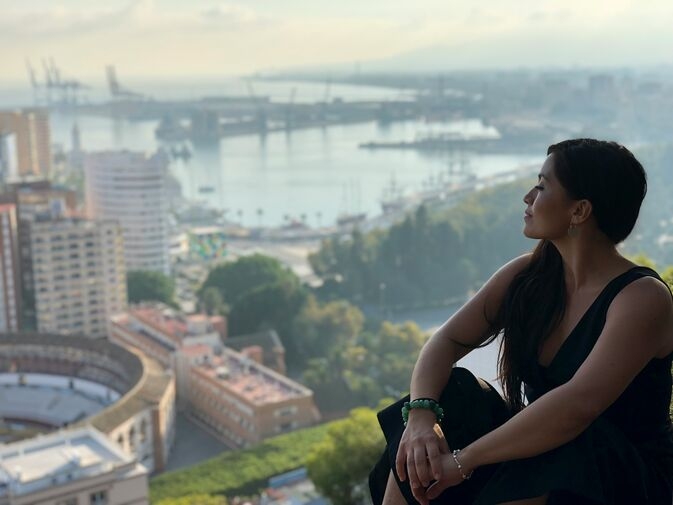Flamenco music is a cultural movement, rooted in Spanish history. Over the years, it has developed its musical structure and its vocabulary. So, what’s flamenco? and what’s the origin of this art form?
1. What is flamenco music?
Flamenco is an artistic Spanish movement. Singing, dancing, and playing guitar are its 3 pillars. This form of art conveys emotions through the voice of the singer and the dancer’s movement. There are fifty different types of flamenco music or palos. Each one is distinguished from its musical rhythm, lyrics, geographical origin, and how its music is interpreted by flamenco dancers.

Cante jondo
This refers to the vocals in flamenco music. According to numerous aficionados (fans), songs are the primary component of this form of art. Indeed, the first cantaores (singers) were alone on stage, without any dancers to accompany them. Cante jondo expresses the power of emotions. Cantaores dives us into the sadness, the suffering, the joy, and the love that each human experiences. The tone of voice is often rough, and the lengthening of vowels intensifies carried emotions.
Antonio Mairena, Antonio Núñez El Chocolate, Agujetas, Camarón de la Isla, Enrique Morente, Carmen Linares are all famous vocal performers.


Baile flamenco
It’s the traditional flamenco dance. On stage, the bailaor or bailoara performs to the rhythm of the music. But the executions vary by gender: it won’t be the same if it’s a man or a woman. Usually, their feet tap the ground in the rhythm of the music (the zapateado), while their arms and hands draw arabesques signs on the sky (called braceo ). The woman can wear the traditional flamenco dress with polka dots or opt for a more simplistic ensemble.
Vicente Escudero, Carmen Amaya, Antonio Gades, Manuela Carrasco, Concha Vargas, Eva la Yerbabuena, Belén Maya, Israel Galván or Andrés Marín are the best flamenco dancers.


Guitarra Flamenca
This instrument is central in flamenco music. It accompanies singers and dancers, but it wasn’t always that way. Until the 19th century, flamenco was only played with percussions. The dancers performed on the rhythm of hand-clapping (or palmas), tapping on the table or the ground. From the middle of the century, people played gradually guitar in cafés cantantes .
La Guitarra Flamenca requires special techniques. The player has his right hand open like a fan, playing with the strings to create a unique rhythm called rasgueado. Which does not restrict him from performing melodious sequences called falsetas to guide the flamenco dance. Paco de Lucià. has brought this art to its peak, as well as Sabicas, Ramón Montoya, Tomatito, Vicente Amigo.


Percussions
As said earlier, the main percussion used in flamenco music is les palmas which settles the rhythm for the dancers. During performances, tambourines or castanets. are also used a lot. Moreover, Paco de Lucià introduced a percussion from Peru, le cajon , as a legitimate instrument of the flamenco repertoire.


2. The roots of flamenco music
When you ask “what is the origin of flamenco” to a Spanish person, you will have one specific answer. Then another Spanish guy will interrupt to tell his version. Then another one will come and so on…and you will end up causing one of the biggest fights of the year.
Flamenco’s origin diverges from several theories.
The origin of the word flamenco
Everything begins with a name. Some hypotheses of the origin of the word flamenco existed but without real foundations. Indeed, this term may come from wildlife. The long-legged silhouette of dancers has been compared with the flamingo birds’ morphology. Some people saw a similarity between the two. However, according to the father of Andalucia, this name comes from the Arabic “felag-mengu” meaning “wandering country person”. But, this supposition is anachronistic. It was around 1836 that the word flamenco started to appear, a long time after Arabs lost their influence on the Spanish territory.
Other poetic historians affirm that “Flamenco” was the name of a knife. In the “El Soldado Fanfarrón” written by González del Castillo, some citations highlight this idea. One of them was: “if they smoke my fish/ and unsheathed the flamenco/ with forty stabs they would finish the story”.
The most plausible hypothesis comes from the gypsies. In the 18th and 19th centuries, this community was called flamencos. It was a derogatory allusion, a synonym of “cocky” or “pretentious”. Gypsies were poorly considered by Spanish people. However, it’s this ethnic group that has given the letters of nobility to the contemporary flamenco.

History of flamenco music
This dance was born in a specific region: a triangle. Not the mysterious one in the middle of the sea, but the one closer, in Andalusia. “The golden triangle of flamenco” is where Canta Jondo was created. The geographical area emerged between Triana in Sevilla, Jerez de la Frontera, and the cities of Cadiz.
Flamenco is a traditional dance taught orally until the 19th century. It has not been documented until then. Therefore, historians have no clue about what happened before. This dance just appeared in this era, having already all the fundamentals that still characterize it today. Before this century we only know that Arabic, Hebrew, and Gypsy cultures influenced flamenco music.

Arabic, Hebrew and Gypsy flamenco influences
Indeed, the 8 centuries of Arabic occupation have left their mark on Spanish culture. The richness of Arabic music was mixed with the notes of Spain. Traces of this have remained in flamenco’s music, palos. Indeed, when the Cantaor sing, we can perceive notes from Magreb and Orient.
In the meantime, some of the Hebrew ethnic groups lived in the south of Spain. Their music directly influenced flamenco.
Moreover, Gypsies immigrated to Spain. Originating from the north of India, this community traveled across Asia to finally settle in Europe. Through their journey, they enriched their culture with the ones they encountered. Their travel stopped in the 15th century, in the lower part of Andalusia: the golden triangle. They quickly became fervent flamenco interpreters and they adapted it to their culture. Over the years, they contributed to the definitive shape of flamenco.
At the beginning of the 20th century, this form of art became very popular in Andalusia. Cantaores and bailaores performed in bars and became local celebrities. At that time, people outside of the gypsy community began to interpret flamenco music. Their execution varied from one city to another, which split flamenco into a lot of different styles.

3. What are the types of flamenco music?
From the cradle of flamenco, fundamental types emerged, expressing different emotions.
Les tonàs, referencing how hard daily life can be. It’s the oldest type of song, harsh and without artifice. La seguiriya where the singer expresses a long complaint mixing suffering, love, and death. On another register, les soleares. The songs talk about greatness, and they are more expressive. But the rhythm increases with les bulerias. This type of flamenco is for la fiesta. The dancer accord herself to the frenzied rhythm of the musicians.
And flamenco types continued to flourish. Each province created its style: rondena (from Ronda), granaina from Granada, and so on….
4. Can we see flamenco in Malaga?
Malagueña
Even Malaga created its own flamenco music: Malagueña. It doesn’t include bailaores but its melody range is wide. The particularity of Malagueña is in its cantaores. They extend some verses as long as they want to. As the result, the rhythm is held up or accelerated. A guitarist accompanies him to perform this complex, modulate rhythm. Malagueña has split into several styles, due to the personal creations of its interpreters. For example, the cantaor Diego Clavel has created 47 forms of Malaga flamenco.

Flamenco concerts in Malaga
To enjoy this form of art in all its colors, flamenco events in Malaga will be hosted. In June, several concerts will stand out on the Malaga stage. The Patio festival organizes two musical performances on Calle Montes Oca 6. One on the 3rd of June, where people will see José Lucena’s flamenco group at 8 pm. The other one will start a day later, with the guitarist José Satore and the cantaora Vanesa Fernández. They will perform between 2 to 4 pm. On the 27th of June, the Aula Municipal de Flamenco in Malaga will host several artists including the dancer Luisa Palicio on its stage. This event will be in the Centro MVA at 7.30 pm.

Every event presented here is for free and for everybody, from beginners to experts of flamenco.
Flamenco is an artistic performance full of colors. Music and dancers connect to describe the profound emotions that a human can feel. It’s a unique movement, modeled over the years by Arabic, Hebrew, and Gypsies cultures and splitting into more than fifty shades, or palos. Flamenco is the result of Spanish history. Every people in this country are proud of it. And this pride has gone beyond the borders and awakened the UNESCO interest. Indeed in 2010, flamenco is declared an Intangible Cultural Heritage of Humanity.












